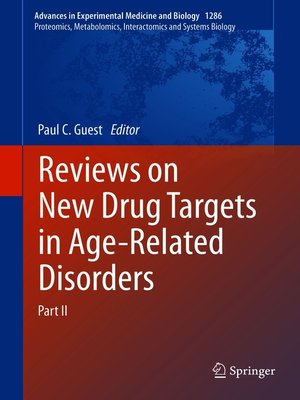Reviews on New Drug Targets in Age-Related Disorders
ebook ∣ Part II · Advances in Experimental Medicine and Biology
By Paul C. Guest

Sign up to save your library
With an OverDrive account, you can save your favorite libraries for at-a-glance information about availability. Find out more about OverDrive accounts.
Find this title in Libby, the library reading app by OverDrive.



Search for a digital library with this title
Title found at these libraries:
| Library Name | Distance |
|---|---|
| Loading... |
Aging is an inevitable part of life, and is becoming a worldwide social, economic and health problem due to the fact that an increasing proportion of individuals in the advanced age category have a higher probability of developing age-related disorders. New therapeutic approaches are still in need to decrease or slow the effects of such diseases in this aging society. Advances in 'omic technologies such as genomics, transcriptomics, proteomics and metabolomics have significantly advanced our understanding of diseases in multiple medical areas. It is hoped that emerging hits from these analyses might be prioritized for further screening as potential novel drug targets for increasing the human healthspan in line with the lifespan, which will in turn lead to new therapeutic strategies and drug development projects by the pharmaceutical industry. This new book presents a series of reviews describing studies which have resulted in the identification of potential new drug targets for age-related disorders. Much of this information has come from 'omic comparisons of healthy and disease states or from testing the effects of potential new therapeutic approaches. Each chapter will be presented in the context of specific chronic diseases or different therapeutic strategies, providing important information on disease mechanisms related to the aging process. This book will be of interest to researchers in the areas of aging and chronic disease, as well as clinical scientists, physicians, and major drug companies. With contributors from Australia, Brazil, Canada, France, Germany, India, Iran, Iraq, South Africa, South Korea, Thailand, Ukraine, United Kingdom, United States of America, Uruguay and Vietnam, this is a timely follow up to Guest's previous book Reviews on New Drug Targets in Age-Related Disorders.







